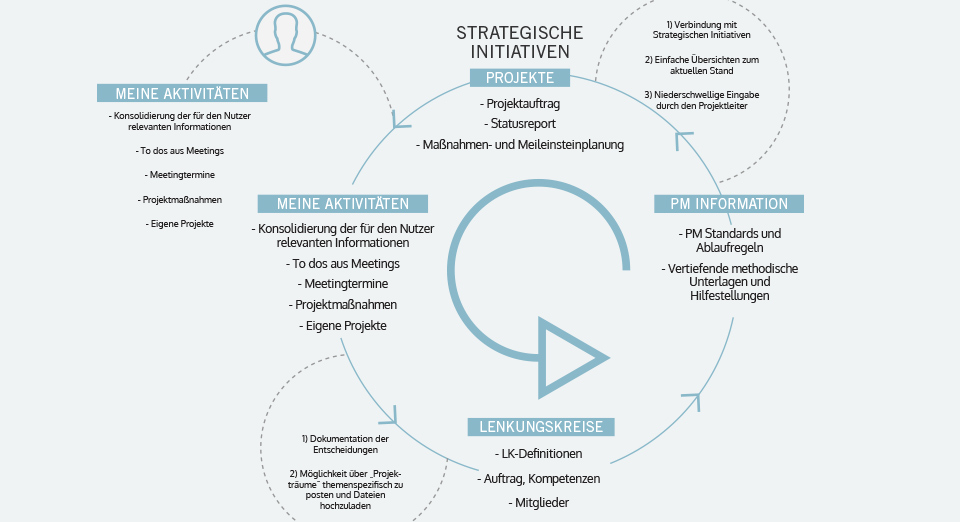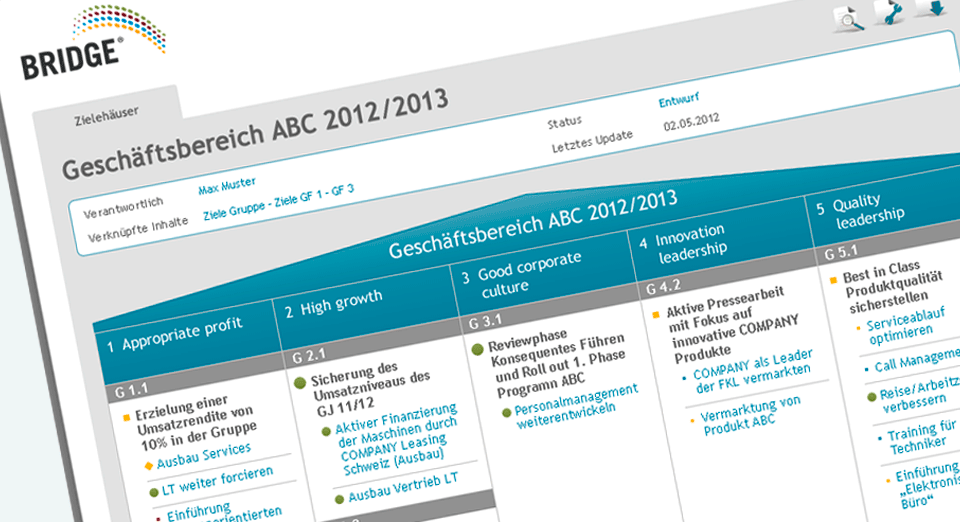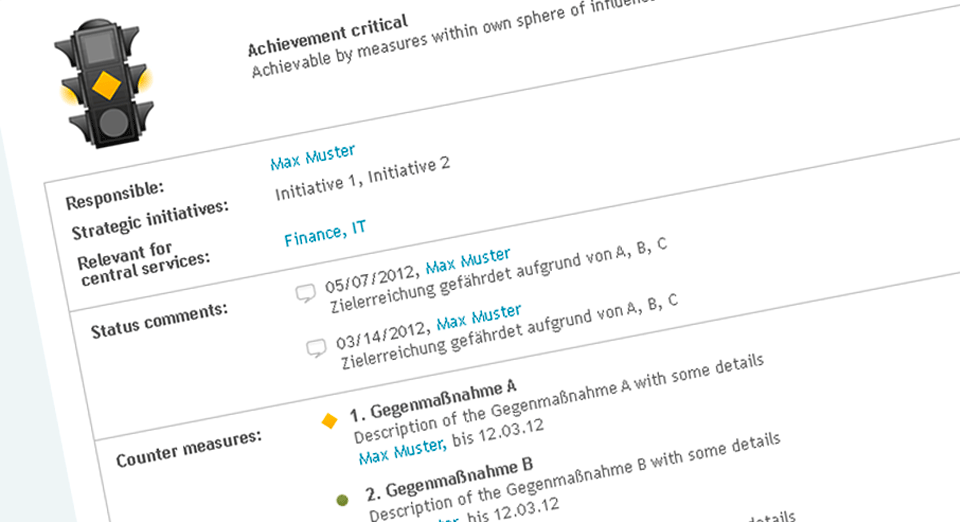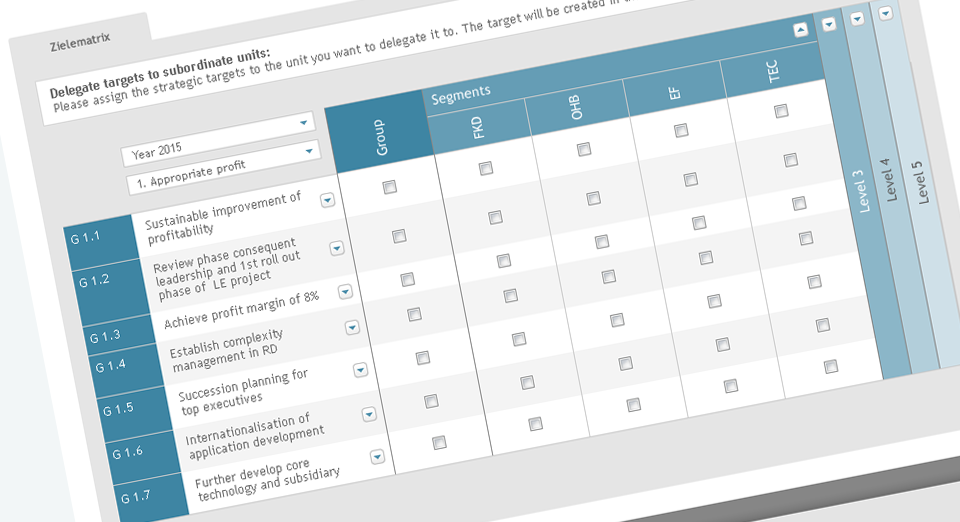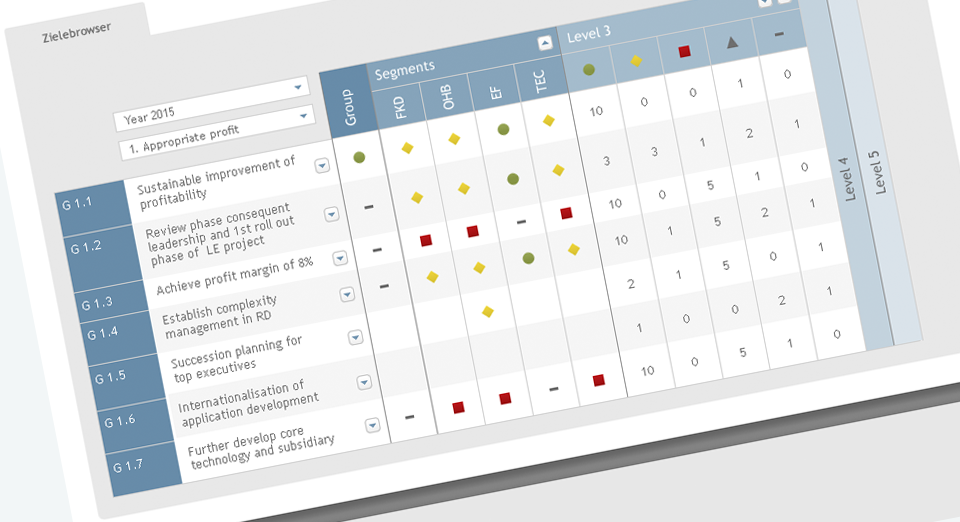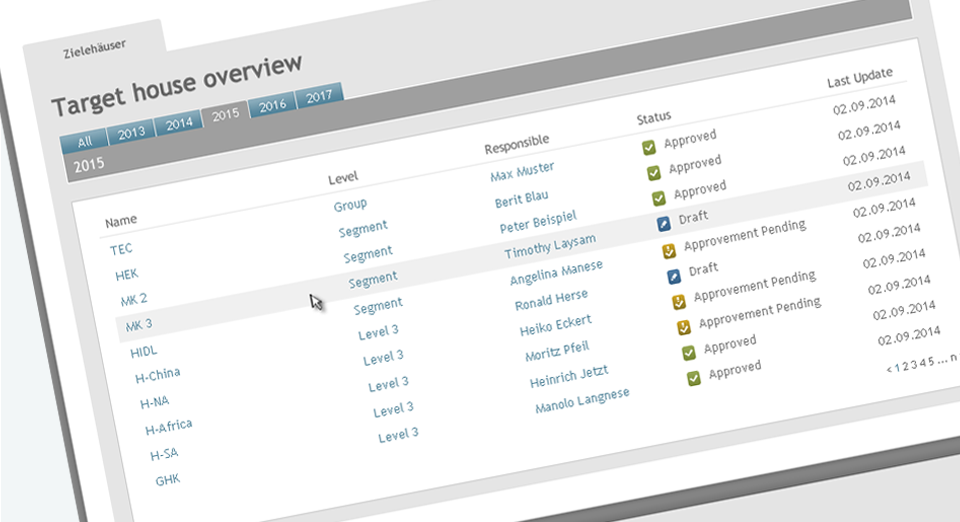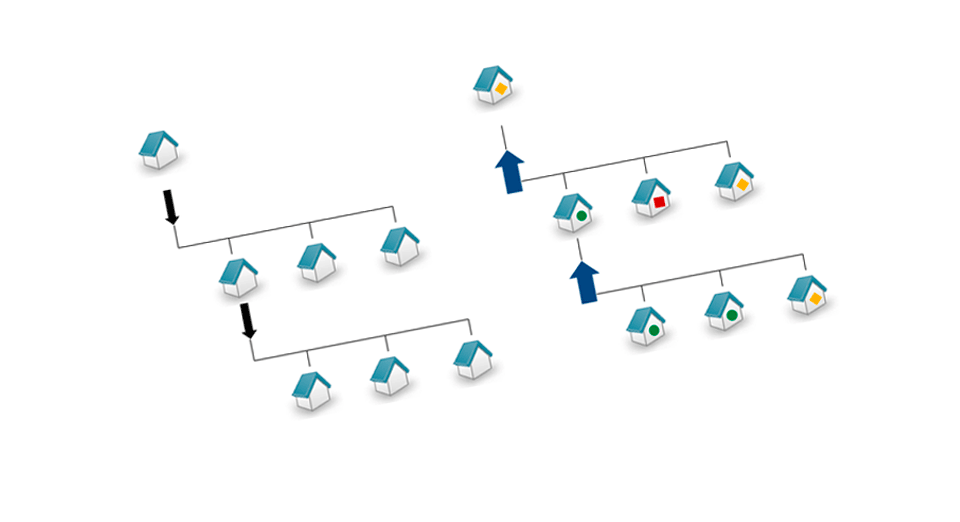With highly efficient target systems, you focus clearly on targets at all relevant levels and in all areas – without integration gaps. You translate the strategy consistently into targets and put it into action without friction losses.
Our targets module provides everything needed for stringently managing your strategic targets. It is based on the target-house principle, which extends across the entire organization. In each target house, starting from the group target house, targets related to your organization’s key indicators are defined. These targets can be interactively channeled into your organizational structure. In evaluation steps every quarter or two quarters, evaluations are performed for every target house by its respective owner. These evaluations are then immediately consolidated and an overview is displayed. As a result, you receive a valid information basis about the success of the implementation of your strategic targets.
SERVICES

Our experts work together with you to devise a standard for defining and managing strategic targets worldwide or by region. Our Management Services Team supports you with expert knowledge and tangible assistance in rolling out the new process across your organization.

“ With BRIDGE®, the previously complex and error-prone process of defining targets and ascertaining status has been simplified tremendously. The resulting data is very valuable. ”
BENEFITS
- Continuity, consistency, and transparency with regard to targets at different levels.
- Simplification of the coordination process and the detailing and delegation of targets, sub-targets, and initiatives.
- Simplification of resource management and allocation.
- Easier distribution, channeling, and communication of targets.
- Coherent linking of targets, sub-targets, initiatives, and measures.
- Simple controlling and monitoring of status and target achievement.
- Conflicting targets are easily identified.
- Common dialog and understanding about the cascading of targets and coordination.



